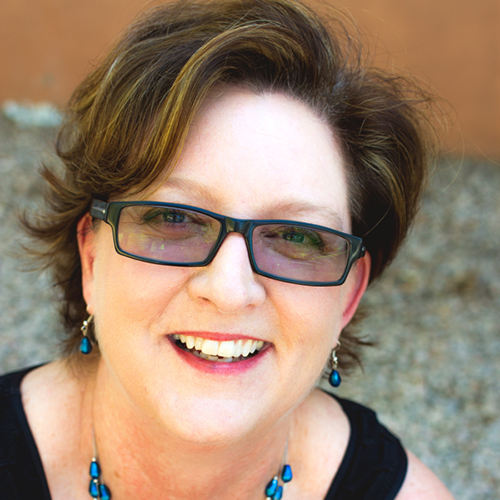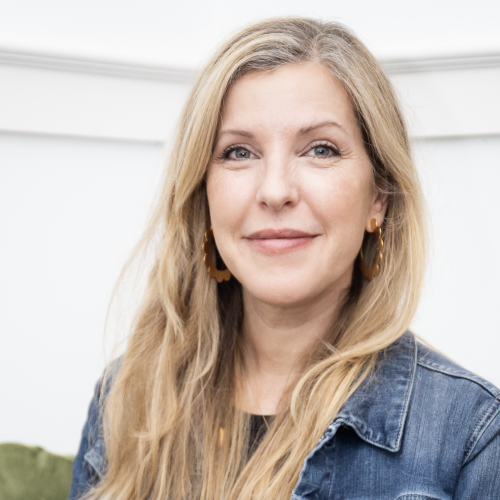Susan Baier
Episode 96: Beyond Demographics – Answering the “Why?” in Travel Marketing, with Susan Baier
Why are people interested in traveling to your destination? Finding out the “why” makes marketing more precise and leads to more visitors and ergo, more revenue.
Finding out the “why” gets beyond lumping people into demographic categories. It helps us understand what motivates them and what could potentially motivate them to choose us.
Our guest this episode of Destination on the Left is Susan Baier. Susan is an Audience and Marketing Strategist. She helps organizations figure out what’s going on in the minds of their prospects and customers, and how to use that information to craft targeted efficient and effective marketing programs. Her company, Audience Audit, develops custom attitudinal segmentation research for smart marketing agencies and their clients in a wide range of industries.
She has worked with over 50 agencies and their clients including Gap, Kona Grill, Infusionsoft, Jayco, Tufts University, AT&T, Pella and more. Susan has been a Marketing Strategist for 30 years working in Fortune 500 firms such as Dial and ConocoPhillips as well as in marketing agencies. She has an MBA in marketing and entrepreneurship and has mentored hundreds of small business owners in marketing and audience strategy. Susan regularly speaks at major marketing conferences including Inbound and Content Marketing World. She’s been featured on Jay Baer’s Social Pros Podcast, the Build a Better Agency podcast, and the Duct Tape Marketing podcast.
More on Susan’s Background
Thank you for joining me, Susan.
It’s so nice to be here, Nicole, thank you.
I love that “ha-ha” in your bio because it really does show off your personality. We’re friends on Facebook, so I know you a bit that way. I’d love for our listeners to know you a little bit more as well. Tell us about your story beyond the bio.
Absolutely. Right. Well, I’m really a marketing strategist, it’s what I am. I started doing that right out of college because I majored in literary writing in 17th-century poetry. The only person who gave me any job advice said, “Maybe you should go in advertising.”
So I did. But the impetus for Audience Audit really came having worked for many years in corporate environments and on the agency side in marketing where I think a lot of what marketers rely on is their gut to make decisions. I do it, I’m sure you do it, we all do it, and luckily there are some good guts out there. But I found it frustrating to not have better data for marketing, especially when I had worked in big corporate organizations that could really afford to spend a lot of money.
15 years ago, 20 years ago, it cost a lot of money to get data on consumers. It’s not like it is today. But they had all this stuff, and then the little guys, the smaller operators just didn’t have access to that. For them it was about taking their best guess, putting their finger up to see where the wind was blowing, or the last person that they talked to, what they complained about. Sort of trying to manage your marketing that way.
10 years ago, I started Audience Audit, which has really built to help marketers get some actual data that is helpful from a marketing standpoint. Because you know, there’s a lot of information out there that we can get, I mean, we’re just overloaded with it right now. We’re at the point where you’re looking at a ton of stuff, and it’s just not really telling you anything helpful for the project that you have ahead of you.
I started Audience Audit to really try to get some actual helpful, reliable data into the hands of marketers to drive better marketing. Better marketing is marketing that works, it actually connects with an audience and makes them want to connect with you. It’s like matchmaking. You can push stuff out all day, if it’s falling on deaf ears, you’re not selling anything. That’s what the work is about fundamentally, that’s where it came from.
That’s really cool. I do hear you, when you have all of this data and you’re looking at it, I feel like you still are taking a shot in the dark, giving your best guess, maybe your guess feels a little bit better and less like a guess, because you have all this data in front of you, but yeah, making sure that it’s something that’s actually useful and helpful to inform your plans I think is so important. You and I have talked about this before. As you know, this is a podcast that focuses on travel and tourism, and I really love your research, and I’m excited for our listeners to learn about it.
Thank you.
Develop Better Marketing Plans Through Attitudinal Segmentation
I think it’s different than a lot of the research I see, that my clients have access to in terms of visitor profiles and looking at trends and things like that. What you do is take it a step further to really inform marketers and how to have better marketing plans, which ultimately will get to better marketing strategies, which will get to better creativity and all of that.
You use a concept called “attitudinal segmentation” which is different from a visitor profile. Can you tell our listeners more about that?
Sure. A lot of the information that we have access to, and it’s been this way for quite some time, is demographic information. It’s the easiest information to get. There are huge databases that tell us everything we want to know about how old we are and how much money we make, and what our family profile looks like and gender and all of those kinds of things. I think because it’s easy to get, the frustration really comes from feeling like you should be getting something helpful from it, and you’re not. When you buy industry reports and it shows who’s doing this, and who’s traveling where, and who are making these choices, that’s a lot of the kind of information. They’re talking about millennials, or gen X, which is, of course, all age-specific information that they’re talking about, income levels, or all those kinds of things.
The reason we get so frustrated, I think, trying to work with that information, is because it’s not really telling us what we need to know as marketers, which is why. Why? Why are they making the decisions that they’re making? That’s what we have to understand as marketers because that’s the only way we can reach them. It’s not very effective to send emails that say, “Hello, women 25 to 49.” That’s not compelling to anybody.
We have to understand something about why that person is exploring the category they’re exploring and making the choices between the options that they have the way they are. That’s “why” information, that’s what attitudinal information is. It basically is looking at what’s going on in that person’s head to frame this decision. How do they feel about making this decision? Why are they making the choices that they do? What’s important to them? None of that shows up in demographics. You and I and 50 other women who look exactly like us demographically could all stand up and every single one of us would have a different ideal vacation destination.

[bctt tweet=”“We have to understand something about why that person is exploring the category they’re exploring and making the choices between the options that they have the way they are.” – @SusanBaier #podcast”]
Because you can’t tell, because I’m a woman of a certain age, on a certain economic strata, whether I want to go lie on a beach and have somebody bring me pineapples with a little umbrella in them, or if I want to go hiking in Guatemala, or if I want to be on an island somewhere and not talk to anybody. You can’t tell that information. That’s what attitudinal segmentation does, it basically looks within an audience and understands how they group together in terms of what they’re looking for, what matters to them, and why.
Right. I think that’s so important, because you’re right, the demographic information that we get as marketers, we can say, “Okay, if I’m going after this age group, I know that they predominantly like to get their information from social media, or they are this much more likely to open an email campaign, or they’re this much more likely to read a magazine article or whatever that behavior might be.” But that still doesn’t tell me what I should actually be saying to them through those channels.
Right. It doesn’t tell you what they want. Families are a great example. Families love traveling, right? It’s a good illustration of how we make these assumptive jumps with folks. If you’ve got data that says, “Oh, families are often traveling to your region together, and they’ve typically got kids under 12 or whatever, and it’s a family trip they’re taking. Okay, that’s all well and good. But what you can’t tell is whether the parents making the decision about that trip want to use that trip as a family togetherness experience or if they’re looking for a situation in which their kids can go do something safely, while being overseen, and the parents can get away from the children for a while. And you know, go hiking, or go to the spa.
But you can’t tell that just by knowing that they’re a family traveling together. Unfortunately, if you say the wrong thing about your destination, if you provide them the wrong options, and it’s the family that really the parents just love to get away from their kids for a little while, and the kids probably want the same thing, then talking to them about togetherness for three days or four days isn’t going to hit the mark. You really have to go deeper. You can’t tell just because somebody rode a motorcycle into your destination, that they don’t want to spend the afternoon at the spa getting their toes done. You just don’t know. You don’t know.
How to Better Understand Your Visitors’ Attitudes
Yeah, that’s a really good point. Can you take us a little bit deeper and talk to us about how this might work? How do I actually discover these attitudes? How do you understand what those attitudes are? Because I’m sitting here, our listeners might be thinking, “Yeah, this really makes sense to me,” let’s use the family example, “but how do I know that Susan’s family is all about the separate activities, but Nicole’s family is all about the togetherness?” How do I find those groups?
Right. So the first thing you have to understand is that we don’t know until we ask. We all have assumptions about what’s going on, and any of your listeners who are working with vacation destinations, travel properties, all that kind of stuff, they see people day in and day out coming to these places, and they talk to them. So they hear various things. What they don’t know, and what we will never know without really diving in and doing some research is whether the thing that one guy said is actually something that a lot of people feel, or if it’s just him.
There are all these attitudes about vacationing, where we go, and what we want to do when we get there. You have to get to a point where you understand what’s motivating your particular audience. Many of your listeners have probably had the experience of buying a package report that says, “Oh, here’s what’s going on with travel and tourism this year, or in the Southeast, or in the US, or in Europe,” or whatever. They read that and feel like they don’t really know to what extent that applies to their particular market, their geography, their particular niche. There’s a big difference if you’re a living museum with educators on the property trying to help people understand a point in history, or whether you’re a spa destination.

[bctt tweet=”“There are all these attitudes about vacationing, where we go, and what we want to do when we get there. You have to get to a point where you understand what’s motivating your particular audience.” – @SusanBaier #podcast”]
There are many considerations that will affect every single organization that’s looking at this information. All of our projects are custom, and basically, we start with this question of, “Who do we want to hear from?” For most of our projects, it’s going to be a combination of people. It’s going to be folks who have visited in the past, folks who have inquired, maybe asked about it or signed up to get some information or called, or something like that. That may be folks who haven’t visited, who aren’t aware of that destination, but are looking at or have visited other kinds of destinations that may be related, or in the same sort of regional area.
A lot of our projects will survey people who are in the database for the organization that we’re working with, and then we’ll get folks who maybe aren’t in that database, but meet the same sort of general parameters of somebody who might actually consider visiting at some point. So a combination is good.
I like that because you do want to understand who is visiting, but you also want to understand who is not coming, who you may be missing. So including those three groups as you mentioned, the inquiries, the past visitors, then those who have never visited, you’ll get that. Is that correct?
Yeah, absolutely. Sometimes among folks who aren’t visiting, or may not even be aware of you, you see opportunities that you didn’t even really think about. Maybe there’s something that those people just loved, but you don’t mention very much. It gives you the opportunity to connect with a whole new group of folks that are interested in something that you haven’t spent a lot of time promoting.
Yeah, I think that’s a great point. Now we know who we want to hear from. What do we do next?
Now we build a custom survey to talk to those folks. Really, that starts with a deep dive conversation with the client. Part of what we’re doing, to be honest, is throwing spaghetti against the wall and seeing what sticks. I want to know what you and your client, and the other people involved in managing the property, or that are involved in the organization, think might be going on. What do they think people are coming for? What do they think might be keeping people away? Who do they think might be competitors in that person’s mind for their time and their dollar? What do they hear? What do they worry about? All of those kinds of things.
We’re going to start a big conversation to talk about that kind of information. Then we go and develop a survey that explores all that and more. A big component of the survey, what really drives the attitudinal segmentation, is this list of statements that people who participate in the survey are going to rate in terms of whether they agree with them, disagree with them, or something in-between.
These can cover all sorts of things, like “I think vacations are best used for keeping families bonded together,” for example. Or, “I like vacations that allow me to do something really different than I do in real life.” There’s going to be a whole list of these kinds of statements, and it’s also going to include things about how comfortable they feel that they know what they need to know to make this decision. We all know people who are always, have five destinations on the tip of their tongue that they’d love to go to, and they’ve looked into them, and they’ve done a whole bunch of research and they know what they’re getting into. Then, there are those of us who are like, “I have no idea. I would like to be where my phone doesn’t ring. I don’t know where that place would be or how much it would cost me to get there, or what the accommodations might look like, or what else I might do once I’m there.”
Those kinds of attitudes are going to be on this list. Then, of course, we’re going to ask demographics, because part of what we want to see is, once we understand the attitudes that are going on, are there any of them that are particularly associated with certain demographic groups? Like people with families, or people traveling for business, or women, or older people, or younger people. We’re going to ask those so that we’ll be able to tell. We’re going to ask questions about the features and benefits that people are particularly looking for. How important is it to have a great restaurant? How important is it for you to be able to go outdoors? How important is the weather?
So again, when we understand what’s going on with these attitudinal groups, these sort of perspectives about what people want in a vacation, we can see if some of those groups are far more concerned about what the weather is like than others are. All of that information works together to help you better understand these groups of people and what you might be able to do as a destination to be helpful as they’re considering what their options are. It gives you the tools to provide helpful information to say, “Oh yeah, that place might be a really good fit for me.”
I think that’s a really great illustration of what you’re talking about here in terms of the attitudes. I like that you have that ranking system of those statements and things that resonate with me versus what might resonate with somebody else. That’s really, ultimately, what makes me different, that’s what makes me different from you, Susan, right?
It absolutely is. It’s going to be different in every situation. We don’t say, “Okay, here are the four common destination-related attitudinal buckets. Let’s see how many people you have in each bucket.” Right? We say, “I don’t know what those buckets are going to be for you.” You are a unique location, you are a unique offering, and you have a unique audience. Let’s find out for your particular audience. Let’s find out what drives the attitudes in that particular population. So they end up different every time, and they give us a lot of insight into what you can specifically do, where you are and who you are to reach the people that you want.

[bctt tweet=”“You are a unique location, you are a unique offering, and you have a unique audience. Let’s find out for your particular audience. Let’s find out what drives the attitudes in that particular population.” – @SusanBaier #podcast”]
Yeah. That just made me think of another question, and that’s when you started to talk about the local, regional, or national audiences, and who you’re trying to attract. But that actually made me start to think about local, regional, and national destinations, depending on how you’re marketing. A lot of what we talk about on this podcast is about collaboration. Many of our guests, who are in destination marketing might collaborate as a region, or they might be part of a wine trail or part of some other group that markets together. How would something like this help inform them more regionally versus where you might have multiple destinations under one regional umbrella, versus just one city, let’s say, doing a study like this?
Yeah, absolutely. Again, it’s all custom built. If we’re working with a group of organizations who are trying together to better understand the audience to whom they can promote their region. Maybe they’ve got hotel destinations in there, they’ve got spa destinations, maybe they have leisure activities like golfing, or boating, or horseback riding, maybe they have cultural institutions. We can ask about all of those kinds of things, and try to understand who is interested in the various things in this region. I did a study a number of years ago for a destination and we had that kind of situation. It was for a Convention & Visitors Bureau.
They were looking at really promoting the region, not just a particular organization or offering there, but sort of everything the place had to offer. We found a group of people who were really interested in the cultural stuff when they came to this destination. When we looked at the data, what we saw was gallery openings, special events, concerts, restaurant events and openings, and guest chefs, and things where you get really dressed up. There was sort of a cluster of things that for them were extremely appealing.
But we also found a group of people who wanted to get outside. That’s what they wanted. They wanted to know what was the weather going to be like if I come in September and what is there for me to do outside? That ranged from laying by the pool to playing golf, horseback riding, whatever. Again if you understand that there may be somebody coming to your site for your Convention & Visitors Bureau, or for your wine tour, who are interested in these activities.
So you tailor a different message for the cultural attraction people and the outdoor people. That way, neither is having to wave through a bunch stuff that they’re not interested in it. If you’re there for nightlife, and gallery openings, and parties, then a calendar or a website that’s full of family-friendly activities, and water parks, and petting zoos and stuff like that, it’s just going to make you feel like, “Maybe they don’t have what I want here. Because I’m having trouble finding it.”
Which may be incorrect. But unless you’re prepared to show them what they really want, then it can get lost in the shuffle. When you do this research and understand who you’re talking about, then on the homepage of your site you can ask, “Are you this kind of a person? Or this kind of a person? Or this kind of a person? Are you looking for this kind of vacation? Or this? Or this?” Then get them very quickly to highly relevant content that convinces them, “Whoa, these people really understand me and have a lot of stuff that I would be interested in during my visit.”
Targeting the Message
Yeah, I like how you just walked us through once you understand those different types of audiences that are interested or that you’re marketing to that giving them a simple way to get to the information they want, like right from the gates, “Okay, you landed on my website, here are three choices. Are you outdoors, are you cultural, are you family?” Whatever those three are, and getting them to that information right away. I’m wondering if you can talk a little bit about how all of this data, these attitudinal segmentations gets delivered to the marketers so that they can make those smart decisions?
Right. A lot of people have a bad experience with research, I call it the dusty binder syndrome, where you just get four inches of three-hole punched pages that are full of charts, and numbers, and stuff, and doesn’t really help you figure out what to do. That just makes me crazy. We don’t do that. We do an actual workshop, we look at the data together in a live visualization, and go through, and talk about the findings and discuss the story that we saw in the data. We have conversations with the agency and the client to find if this aligns with what they see. Is this something surprising? What do you think you could do with this?
As part of that, we’re looking at sort of what’s going on with each of the distinct attitudinal segments we found, whether that’s three or four, or five, or whatever it is. We’re having a conversation about, as a group. Do all of these segments make equal sense for us as a destination? Is there one of these that honestly we could take or leave because we’re not really a great fit for them or them for us? Should we really focus on these two or three?
Then, in addition to the segment-specific information, we’re always going to talk about the stuff that really appeals to everybody. There always is stuff that’s just universally appealing across the board, and quite honestly, there’s often stuff that nobody cares about. Sometimes the CVB is saying, “This has been a holiday destination for 100 years,” or something like that, and maybe we find that actually nobody we’re talking to cares about that at all. It doesn’t mean it isn’t true, it doesn’t mean it isn’t a great rallying cry for the organization, but in terms of marketing and appealing to visitors, that is not anywhere near the top of the list of something that they want to hear about.
Maybe, it even suggests something negative to them. Maybe they think of it as like, “Oh, maybe it’s dated. Maybe the facilities are older. Maybe I should find something that’s more up to date.” We’ll talk about those things too. Then, what the marketer can walk away with is, first of all, a really good understanding of the kinds of people that they are looking at in their audience. Visitors, prospects, people who haven’t heard about your destination, but might suggest that they might really be interested in it. What does that layout look like? Then, really you get sort of a roadmap.
One of the things we ask about is what kind of information would be helpful to you in making a decision about where to go? We have a whole list we can put in front of people that we create with you guys, and we’ll get a read on for each of the segments as well as overall. What do we need to be saying and to whom do we need to be saying it? What’s at the top of the list, and what do we really need not to worry about very much? You really do get a content map that says, “This is where we need to be talking about that.”
Right. That is that content map that comes from conversations that you have in the very beginning with the deep dive that you do, and those types of questions are woven into the research as well.
Yes. There is information we know just from doing this for so long, that often come up in this kinds of things, so even if it isn’t something that was discussed initially, there are things that we’ll put in there because we’ve seen them come up in other studies as being of interest, or as of being important content, or as of being resources that people are using to get information or get advice about travel. We gather all of that, and then we have some info that we put in there from our end. You really get a map of what you can do. The nice thing about that, honestly, Nicole, is that when we go through these segments, inevitably people in the room say things like, “Oh, we should tell them about this. Oh, they would love that. Oh, do you remember that thing we were talking about that we thought we might do, that would be perfect for this group?”
It just engenders creativity in terms of innovative thinking on the part of the organization, because you see opportunity to reach people where maybe before you realize that were those kinds of people that had those types of interests or concerns, you didn’t really think would be a big deal, but now you look at that segment and realize these people would love this particular program that we’re talking about.
Yeah. That’s really awesome. I’m wondering, how big of an audience do you need? I forgot to ask this question earlier when we were talking about who we wanted to hear from. We talked about the different kinds of people that we’d want to survey. Do I have to have a huge email database? How big of a reach do we need?
Ideally, we like to have about 400 completed responses to the survey at a minimum. There’s no upper limit, so we can have as many as we want. We can do it with less than 400 if we need to, but that’s typically our target. There are a few ways to get that. Sometimes you’ve got a big list, and you can get 400 completed responses out of that list, just your own list. Sometimes that’s just not possible. Sometimes you have partners who would be willing to distribute the survey on your behalf. Let’s say you’re a destination in a region, and there are CVBs in the area or destination magazines. They might have a big database of people that they would be willing to send an invitation to participate in the survey on your behalf.
Maybe you even tell them that you’d be willing to share some of the results of what you find in exchange for them sending an invitation to their database for you. The other option is to work with panels. We do a lot of panel work because they help fill in respondents that clients don’t have. For example, we were talking about people who haven’t visited your destination. But let’s say we can go out and work with these panel providers who cultivate large groups of people who are willing to participate anonymously in survey research.
They know who they are, the panels we work with are world class, they’re very careful about doing checks to make sure that this person is who they say they are, they’re the age they say they are, that they work in the kind of industry that they say they do. They have all that information, we don’t know who they are. But we can get these people to participate in our surveys. Let’s say you’re a tourist destination in a particular region, we can get people who may have visited the region before, or plan to visit the region, but haven’t heard of you.
Then we incorporate them into the same survey that your other folks are taking so we can see what the rest of the population that’s visiting that area looks like. Do they look a lot like the people you have? Or are there groups in there that you could access that you don’t right now? Every project is different, and we look at respondent strategy from the ground up with every client like we do everything else. There’s no single way to do this, it just depends on the client and the situation with their database.
We do this work with groups who don’t have any client list because they’re doing something new. So they don’t have an audience yet. We’re working with panels, and other things like that to hear from the folks that they want to have but they don’t have now.
I think that’s great. I think that was important for us to dive into. I’m glad you expanded on that a little bit because it’s a common question among our listeners: do I have a big enough audience to reach to even do this research?
Right. That’s one of the benefits when you were talking about, say, a wine tour situation or a regional CVB situation. But for the destination that I was talking about, where we did the research and we found people who like to be outside, or people interested in culture. Because they were a CVB, they got the local hotels to send an invitation to their lists. Nobody asked to share anybody else’s list, so they were not giving up anything. It’s a matter of sending an invitation with a link in it to participate in a survey. The person who gets the email clicks on the link and then takes the survey anonymously. But they had restaurants send it to their lists, they had hotels, and luxury housing send it to their list, they had things like the golf courses send it to their list.
All of a sudden, we have a really diverse group of respondents who may not have visited a particular destination, or hotel, or restaurant on the list, but are in the area, or looking at the area. So everybody can benefit from that type of general information. Then, if you do have somebody in there who has a big list, we can give them a specific link to distribute for their invitations. If they get 200 or 300 respondents we can actually look at the people they generated to participate in the survey versus everybody else and see if the people that that hotel is getting are different from anybody else, or that golf course is getting. How do they compare to sort of the rest of the population that participate in the survey? Are they wealthier? Are they different attitudinally?
I imagine when you do that, you hear from overnight visitors. You might have an out-of-town visitor there, but you also might have local there. I imagine you’re able to through this survey segment that out as well, correct?
Yeah. We can look at the attitudinal segments, are the locals more likely to be in one or two of these segments than in some of the others? If that’s the case, what could your destination be doing midweek, or during more quiet times, when the out-of-towners may not be as likely to be there, but the locals are there, what could you do to generate repeat visits from those kinds of folks? To help fill in from the weekends, when the motorcycle tour is in town, or the visitor is going from place A to place B or destination for a sports event, or whatever.
I’m actually going to ask you to tell us about one of your case studies. I’ve talked to you about this one before. It’s one of my favorite stories, and it’s not a tourism-related case study, but I love it because most people can relate to it. I refer to it as the candle story. I’m not sure what you call it. But I call it the candle story. I’d love to have you share with our listeners about a project you worked on from beginning to end. I think that would be really beneficial for our listeners to hear.
Absolutely. So the candle story. I had a client that was a manufacturer and a brand of luxury home fragrance products. They produced very high-end potpourris, scented candles, and weed diffusers and all of this kind of stuff. They had very complex fragrances at all range of fragrances, with many seasonal products. They put these fragrances into all sorts of other products as well. They sold those products, they had an e-commerce website, so they sold them through their own website. They sold them, believe it or not, through a catalog, they still had a print catalog that people were buying from. Then they sold them through third-party retailers like department stores and gift stores. They didn’t have their own retail locations, but places like Nordstrom and the gift stores would feature their products.
As you can imagine, they had a sizeable database and they were really looking at their buyers in terms of people buying from the website, people buying from the catalog, others who buy in the stores. That’s sort of how they segmented their marketing activity too. Is this product for the online people or the catalog people? It was pretty siloed organizationally. When we did this research, we found one segment of buyers who were very fragrance focused. For them, really, fragrance is all about establishing their own mood when they walked into their house. They didn’t really care what anybody else thought about it, it was for them.
They wanted to release the stress of the day, and relax at home, and they would have lots of different products in the same fragrance, from the bathroom, around the tub, or whatever, because it made them feel a particular way. For the organization, they expected to see these people, because that’s who everybody was that worked in the organization. They were all fragrance people, and they loved talking about the fragrances and how unique they were. They were not surprised by this group.
But then we found another group that was really interested in these products because they loved to decorate and show off their house. For them, it wasn’t really how they were feeling on their own, ultimately. It was how somebody responded when they walked into their home and said, “Oh my goodness, this place is gorgeous, and it smells incredible, and it looks wonderful. You’re the next Martha Stewart.” For those folks, interestingly, the fragrance was not the primary consideration, design and color were the primary consideration because they were putting together something to look good on the mantlepiece, on in the centerpiece of their dining table when they were entertaining.
Fragrance can actually be a problem in those situations because it can compete with maybe what you’re cooking, or if you have 18 different fragrances going on in the green bathroom, that could be a little bit overwhelming. For these folks, it was really what these products looked like, and the range of design and how beautiful they were. The fragrance was secondary and maybe they would actually prefer them to be unscented so that they could have the beauty of them without sort of this overpowering fragrance competing with their roast. That was a little bit of a surprise.
Then, the third group we found was people who liked to gift these products. This was just one of their go-to categories. Honestly, for these folks, it’s not really what’s in the box, it’s about how expensive the box looks and how the brand reputation is seen as a luxury brand. Because again, these folks are really responding to that person saying, “Oh my gosh, you shouldn’t have, this was so generous of you. I love this brand. Did you wrap this yourself?” That ultimate gift experience that they want.
The fascinating thing about this study was that these people all looked the same demographically. They have the same split of male and female, and income levels, and age. They don’t look any different on paper. So you can’t see this at all for this company when you’re looking at how people look demographically. Interestingly, they’re all sort of buying in different situations too. The folks who were really fragrance-focused will not buy online or in the catalog unless it’s something they’ve bought before, and they trust that your quality control was good, and they’re going to get the same thing they got last time.
On the other hand, the decorators are buying online and in a catalog like crazy, because it’s not about the scent for them, it’s about what it looks like. They’re decorating a lot and for a lot of different situations. They’re perfectly happy to buy online. Same with the gifters. After this research got absorbed, we went to work on trying to figure out how better to communicate with the folks that we had.
One of the things that group really wanted, the catalog was powerful in moving sales, as many catalogs still are, believe it or not. They were a powerful driver of people moving to try new products. If any of you, listeners, get all of the Soft Surroundings and all of those clothing catalogs, you’ll know what I’m talking about. One of the things we wanted to do was see if we could get the fragrance lovers to buy things from the catalog more often. What we did was scratch and scent the catalog for new fragrances and only for that particular group. After we made that change, we also put in some decorating tips into the catalog for the decorators about beautiful mantle pieces. We put in wrapping tips and how to make beautiful gift baskets and how to tie a certain kind of bow or whatever.
We did all of that in the catalog, and the catalog doubled in sales in the following year. It increased three times for the fragrance lovers we scratched and sniffed it for them. Just basically having some highly relevant content that says, “We see you. We know what you’re interested in, and we’ve got something for you.” Is incredibly compelling. They did a similar thing on the website, and they had just great click-through rates, their pay-per-click ads were much more successful. They actually created, coming off of the research, one of the things we do at the end of our studies, even though they’re anonymous, we ask people if they’d be willing to engage in more research with the company.
We typically get anywhere from 40% to 70% of people to sign up for that. This organization did that too and then turned that group of people into an insiders group. When they would go have gift shows at the big shows, when they have introductions, these people would be invited to a separate, like a cocktail party, with the leadership of the organization, to see new products, to be able to test new products. I can tell you that many years later, this organization is still using that group of people, which has grown substantially now, to test new fragrances, and to turn the fragrances into products that will be launched in the coming season.
It’s just become a huge resource for them of consumer feedback and it’s been very successful. It just started with understanding their audiences in a different way than they had been looking at them.
I just love that story and that example, because I think it gives so much context to exactly what this attitudinal segmentation can really do for marketing. That insiders thing is so cool because not only do you have these die-hard fans, but I imagine that there’s got to be a lot of social sharing and word of mouth that happens as well.
There is. They become brand advocates. Social, in particular, Pinterest, was big for that decorator group, so the company created a Pinterest badge for the insiders to show that they were basically special in the eyes of the company, and to show their followers that they were really sort of influencers with regard to this kind of thing, and it was huge. So yeah, a lot of advocacy and sharing and word of mouth.
I don’t know if you’ve had a chance to read Jay Baer’s new book, Talk Triggers, it’s just coming out October 2nd, but that’s what that book is all about. Word of mouth and how to get people to talk about you and how incredibly important that is. You have to be compelling in order to have that effect. So in the candle story, people saw an email from the organization and opened it. First of all. Which we know is not a foregone conclusion. Then, they were invited to participate in what’s typically a 10 or 15-minute survey, and they clicked on that. Then they got to the front page of the survey, which reminds them that it’s going to be a fairly extensive survey, and they kept going.
They completed the survey, and at the end, were asked if they wanted more, and they said yes. And provided their contact information. When you think about the level of engagement of these folks who participate in surveys, it’s not surprising that they jump in because they appreciate you asking, they like being heard, and they like being part of what your organization is doing.

[bctt tweet=”“When you think about the level of engagement of folks who participate in surveys, it’s not surprising that they jump in because they appreciate you asking and they like being part of what your organization is doing.” – @SusanBaier #podcast”]
I’m sure many listeners are jotting that idea down. But this whole idea of creating that insiders group, your own influencers network, if you will, a lot of what we do with our clients involves trying to reach out to influencers to jump up and down, and get their attention so that they will talk about us. But to create your own network of influencers is just great.
Yes, it is. The book I mentioned, the new book that’s coming out, Talk Triggers by Jay Baer and Daniel Lemin, I did the research for that book. One of the things we saw in that research was that word of mouth from people you know is much, much more powerful than celebrities, or anything else. It is the people you know, the people you’re connected to in your social network, they really have an influence on all of us when we’re making decisions to a far greater extent than a celebrity does. Building an influencer group of your own, that has experience with your brand, and is excited to advocate on your behalf is a much better use of your time and effort than trying to get Khloe Kardashian to be talking about your hotel, which is unlikely anyway. She’s apparently got much more important things to do.
That’s great. I knew this would be a great conversation, and I knew it would go by quickly. There’s so much to talk about, we could just keep talking for quite some time, but I want to be respectful of your time, and our listeners time. But do you have any final words of wisdom or anything that you haven’t shared that I haven’t asked you about that you’d like to say before we end?
The one thing I would say is, even if you’re not at the point where you think you can do this kind of research or you’re just getting started, take a few moments and try thinking about the audiences that you want to reach without thinking about their demographics. Think instead about what they’re looking for, what they might find appealing about you and why. And see whether that gives you some additional ideas for content, or programming, or whatever. Because we tend to lean on demographics and check off the box because it’s easy, but it doesn’t get us very far. If you force yourself to avoid looking at that and instead assume that every single person that you could talk to looks exactly the same on paper, what would you say about what you do and what promise you’re fulfilling that might set you apart in their eyes from somebody else? It’s a good exercise for all of us to do I think.

[bctt tweet=”“We tend to lean on demographics and check off the box because it’s easy, but it doesn’t get us very far.” – @SusanBaier #podcast”]
Yeah. I think that’s really great advice. Susan, where can our listeners find you if they want to learn more?
You bet. The website is audienceaudit.com, you can reach me susan@audienceaudit, or I’m on Twitter @SusanBaier. I’m also on Facebook, and I don’t really have a wall between my business and my personal, so the warning.
Well, we’re friends on Facebook, and I think your Facebook is really fun. Actually, you were just recently on a cross-country trip practically from Arizona-so that was fun to watch. Thanks for being here.
Thanks for having me on. It’s been a fun conversation.
Resources:
- Twitter: @SusanBaier
- Facebook: facebook.com/susanbaier
- Website: audienceaudit.com
- Talk Triggers Book: talktriggers.com
We value your thoughts and feedback and would love to hear from you. Leave us a review on your favorite streaming platform to let us know what you want to hear more of. Here is a quick tutorial on how to leave us a rating and review on iTunes!







